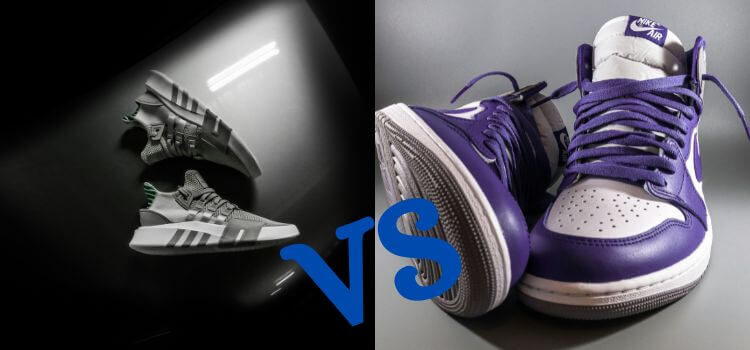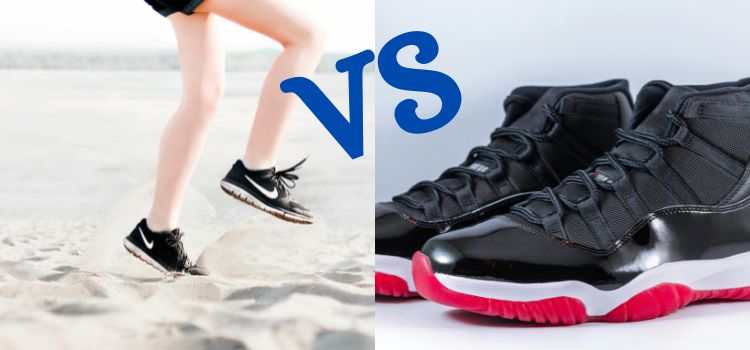Neutral running shoes provide a balance of cushion and support for runners without overcorrection, whereas stable running shoes offer enhanced support and correction for overpronation. Choosing the right type depends on a runner’s foot mechanics and gait.
Runners often decide between neutral and stable running shoes, each designed for specific needs and foot types. Assessing your gait and understanding the nuances of these shoe categories can lead to improved comfort and performance. Neutral running shoes cater to those with a natural gait, offering versatility without extra support mechanisms.

Conversely, stability shoes target overpronators, whose feet roll inward excessively, providing additional support to mitigate injury risks. Your foot structure and running style dictate the optimal shoe choice, and fine-tuning your selection can enhance running efficiency and comfort. This choice isn’t just about immediate feeling and the long-term impact on your running health and success.
Anatomy Of Running Shoes
Understanding the anatomy of running shoes helps runners make better choices. Runners face many options, like neutral or Stability shoes. Each type has unique features and designs. Knowing these can lead to improved comfort and reduced injury risk. Let’s dissect running shoes into their key components.
Key Components
- Upper: The top part of the shoe that holds the foot in place.
- Midsole: The cushioning layer between the upper and outsole.
- Outsole: The bottom layer is designed for traction.
- Insole: The removable layer inside the shoe for extra cushioning.
- Heel Counter: Reinforces the heel area and provides Stability.
- Toe Box: The front part where the toes sit is crucial for proper fit.
Understanding Shoe Structure
Neutral running shoes often have more flexibility and cushioning. Runners with a neutral gait prefer these. They often have a single-layer midsole.
Stability running shoes feature supportive elements. These include multiple densities in midsoles and medial posts. They help correct overpronation. This is a rolling in of the feet upon landing.
Here’s a simple comparison of the shoe parts:
| Shoe Part | Neutral Shoes | Stability Shoes |
| Upper | Light and breathable | Structured and secure |
| Midsole | Single-density | Dual-density |
| The Outsole | Flexible | Durable, with a grip |
| Insole | Soft and cushioned | Contoured for support |
| Heel Counter | Minimal | Reinforced |
| Toe Box | Roomy | Spacious, but secure |
Neutral Running Shoes Explored
Runners often face a choice between different types of footwear. Neutral running shoes stand out for their versatility. These shoes cater to runners with a natural gait. Unlike stability shoes, they provide cushion without corrective support. Let’s unravel the world of neutral running shoes and see if they fit your running style.
Ideal User Profile
Neutral running shoes suit runners with a high or normal arch. They benefit those who do not overpronate. Ideal for daily training, they support the foot’s natural motion. Are you a neutral runner? Look at your old shoes. Even wear on the soles likely means you are.
Pros And Cons
- Pros
- Enhanced comfort and cushioning
- Suitable for runners with natural gait patterns
- There is a wide variety of models to choose from
- Cons
- Not ideal for overpronators without custom orthotics
- Less motion control compared to stability shoes
Delving Into Stability Running Shoes
Stability running shoes cater to runners who experience overpronation. This condition involves the foot rolling inward excessively upon landing. Understanding the Design and impact of stability shoes helps runners make informed choices.
Design Features
Stability running shoes stand out with their specialized Design.
- Medial Post: A firmer foam section reduces overpronation.
- Heel Counter: This feature enhances rearfoot support.
- Midsole Technology: It balances cushioning and support.
Benefits For Runners
Runners with overpronation reap benefits from these shoes’ features.
| Benefit | Detail |
| Improved Stability | Reduced risk of injury from better foot alignment. |
| Enhanced Support | Targeted midsole keeps the arch from collapsing. |
| Durability | Structural components tend to wear slowly. |
Potential Drawbacks
Despite the advantages, some aspects may only suit some runners.
- Weight: They are often heavier than neutral shoes.
- Rigidity: Some runners find them less flexible.
- Limitation: Not ideal for those without overpronation issues.
Comparative Analysis: Neutral Vs. Stability
When runners choose shoes, they often pick between neutral and Stability. Each type has different features. The right shoe can help avoid injuries and improve running. Let’s dive in to see which shoe type best fits your needs.
Cushioning And Support
Bold choices in cushioning can define your run. Neutral running shoes offer ample cushioning for shock absorption. They suit runners with a neutral gait. These shoes allow a more natural foot movement. Conversely, stable running shoes add support to the midsole.
- Neutral shoes: Focus on cushioning comfort
- Stability shoes: Extra arch support for overpronators
Performance Implications
Performance matters when logging miles. Neutral shoes can be lighter, promoting speed. They’re best for runners without severe pronation.
Stability shoes correct pronation. They often feature a medial post for midfoot rigidity. This can prevent overpronation-related injuries.
Choose based on gait analysis results:
| Shoe Type | Best For |
| Neutral | Runners with a balanced stride |
| Stability | Runners needing pronation control |
Durability And Wear
Long-lasting wear is essential. Neutral running shoes often sport durable outsoles. They handle high mileage well. Stability shoes may have reinforced areas. This is to correct gait and reduce uneven wear.
- Neutral shoes: Focus on even, long-term wear
- Stability shoes: specific areas reinforced for durability
Choosing Your Perfect Pair
Finding the right running shoes can feel like a daunting task. Should you go for neutral or Stability shoes? The right pair can enhance your run, maximize comfort, and prevent injuries. Let’s dive in to find the formula for your perfect footwear match.

Gait Analysis And Fitting
Understanding your gait is vital in choosing proper footwear. A professional gait analysis can identify your pronation level. This refers to how your foot rolls when it hits the ground. Neutral shoes suit those with little to no pronation. On the other hand, stability shoes offer support for overpronators whose feet roll inward excessively.
Once you know your gait, it’s time for a fitting. Go to a specialized running store where experts measure your foot size and shape. They can recommend the best shoe fit. Remember, sizes may vary across brands.
Key tips:
- Get analyzed by a specialist.
- Try on shoes in the late afternoon when your feet are most significant.
- Wear the socks you plan to run in.
Terrain And Running Styles
Consider where you’ll be running. Different terrains require specific features in a shoe. For road running, look for cushioning to absorb impact. Trail runners need shoes with good grip and ankle support to navigate uneven terrain.
Your running style also plays a part. Neutral shoes benefit a light runner with an efficient stride. Stability shoes are better for runners who need structural support.
Choose based on:
- Your most common running surface.
- Your unique running mechanics.
- The support your feet demand.
Price And Brand Considerations
Price only sometimes equates to quality. Set a budget before you shop and find the best value within that range. Look for the features you need, not just a famous brand logo. Respectable brands offer options across price points. Check online reviews and ask fellow runners for recommendations.
Remember:
Value over Brand
Focus on the shoe’s functionality rather than the brand.
Investment
Consider your running shoes as an investment in your health.
Sales and Discounts
Look out for seasonal sales or last-season models for deals.
Choosing the perfect pair of running shoes is crucial for your running experience. Consider your gait, terrain, and budget to make an informed decision. Remember, the most expensive shoe might be better for your feet. Find the balance between quality features and your financial comfort zone
.
Common Myths And Misconceptions
Common myths and misconceptions often surround the choice between neutral and Stability running shoes. Many runners pick shoes based on hearsay or outdated advice. This section will debunk those myths and lay out the facts for an informed decision.
Correcting Misunderstandings
Myth: More cushion means better protection.
Truth: The right amount of cushion depends on your stride and weight.
Myth: All pronators need stability shoes.
Truth: Not all pronation is harmful; some are natural.
Myth: Neutral shoes are for everyone.
Truth: Each runner’s feet and gait are unique. One size doesn’t fit all.
Myth: Stability shoes can fix all stride issues.
Truth: Shoes aid, but technique and strength training are essential.
Shoe myths can lead to poor performance and injury risks.
Evidence-based Shoe Selection
Selecting running shoes should be a decision made on evidence, not fiction.
| You Need | Neutral Shoes | Stability Shoes |
| High arch and neutral gait | Fits well | Not necessary |
| Mild to moderate overpronation | May not provide enough support | Good option |
| Preference for natural foot motion | Ideal choice | May restrict movement |
| Need for motion control | Not ideal | Better suited |
Remember: consult with professionals and consider gait analysis for the best advice.
- Understand your foot’s arch type and gait pattern.
- Test various shoes during a running session.
- Factor in past injuries and running surface.
Shoe choice should be as individual as your running style.
Expert And User Experiences
Choosing between neutral and Stability running shoes is a personal decision. It often relies on expert insights and real-world feedback from runners. Let’s dive into both to guide your choice.
Testimonials And Reviews
Runners worldwide share their experiences with different shoe types. Online platforms buzz with personal stories and reviews. Here’s what they often highlight:
- Comfort levels for long runs
- Support provided by the shoe’s structure
- Durability over numerous workouts
- Personal preferences on shoe design and aesthetics
Individuals with flat feet or pronation issues often praise stability shoes—those seeking a more natural foot movement lean towards neutral options.
Professional Advice
Experts in the field of sports medicine and podiatry offer tailored advice. They often discuss the following:
| Consideration | Neutral Shoes | Stability Shoes |
| Arch Type | High/Normal | Low/Flat |
| Pronation | Normal | Overpronation |
| Foot Strike | Fore/Midfoot | Heel |
| Usage | Competitive Racing | Daily Training |
Professional guidance helps to match the right shoe to your unique stride and anatomy. They encourage visiting a specialist for a gait analysis. The right choice can prevent injuries and improve performance.
Glean wisdom from both sources to pick the shoe that best suits your feet.
Future Of Running Footwear
Running shoes constantly evolve. Designers craft them for peak performance and comfort. The future looks bright with emerging trends and breakthrough technologies.
Innovations On The Horizon
Let’s explore what’s coming in running shoe tech. Materials are getting lighter and more sustainable. The shoe will be more personalized.
- 3D printed soles for customized cushioning
- Smart shoes that sync with devices for performance tracking
- Biodegradable materials for eco-friendly options
Brands aim for revolutionary comfort and durability. Innovations focus not only on performance but also on sustainability.
Predicting Trends In Running Shoes
Tracking the latest trends is critical to understanding the future. We see adaptive cushioning and smart insoles on the rise.

| Trend | Benefits |
| Energy Return | Boosts performance |
| Lightweight Design | Enhances speed and comfort |
| Motion Control | Improves Stability for Pronators |
Brands will focus on individual runner needs. Expect shoes that adapt to varying terrains and personal biomechanics.
Frequently Asked Questions On Write A Comparison Article On Neutral Vs. Stability Running Shoes.
What Is The Difference Between Neutral And Stability Running Shoes?
Neutral running shoes offer flexibility and cushioning for balanced support, suitable for runners with a neutral gait. Stability running shoes include additional support features to correct overpronation, ensuring proper alignment for those with flat feet or irregular foot motion.
What Is The Difference Between Neutral And Supportive Shoes?
Neutral shoes offer balanced support without corrective features, ideal for runners with a natural gait. Supportive shoes contain stability elements, targeting overpronation and providing arch support for those with flat feet or irregular walking patterns.
What Are The Benefits Of Stability Running Shoes?
Stability running shoes provide enhanced support, reduce overpronation risk, and improve comfort for runners. They offer better arch support and help prevent injuries, ensuring a safer run.
Do Stability Shoes Make A Difference?
Stability shoes can significantly improve comfort and support for overpronators. They help maintain proper foot alignment, reducing injury risk during activities such as running.
Conclusion
Deciding between neutral and Stability running shoes can be pivotal in your running journey. Consider your arch type, gait, and comfort. Balance is critical—your individual needs dictate the best pick. Always consult with a specialist if in doubt. Equip yourself for miles of healthy running ahead.
Related posts:
- Volleyball Vs. Tennis Shoes
- Canvas Vs. Leather Ballet Shoes
- Indoor Vs. Outdoor Soccer Shoes
- Baseball Cleats Vs. Softball Cleats
- Snow Shoes Vs. Crampons
- Foot Locker Vs. Finish Line
- On Cloud Vs. Nike
- Baseball Shoes Vs Football Shoes: Ultimate Performance Guide
- Turf Shoes Vs Softball Cleats: Which is Best for Your Game?
- Volleyball Shoes Vs Sneakers: The Ultimate Performance Showdown
